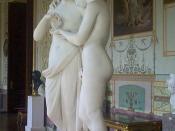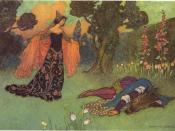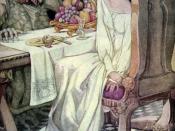One of the more significant qualities of the myth is that its stories and legends have definitely transcended time. According to Classical Mythology, "Perhaps the most remarkable attribute of classical mythology is its persistence." (997) The universality of the Greek and Roman myths is perhaps best shown in how present they are in today's fairy-tales. A prime example of this is the connection between the myth of Cupid and Psyche and the old French fairy-tale of La Belle et La Bete, or Beauty and the Beast. In both myths, appearance versus reality is a central theme, and in both myths neither are as good as they may initially seem to be.
Both myths start and end similarly. In the beginning, both Psyche and the Beast have very angry mother figures. While in the Cocteau version the Beast has no origin other than a vague reference to his parents in the very end, in the popular Disney version he is initially a handsome prince who is turned into a beast by an Aphrodite-like fairy as a punishment for his pride.
Like the Beast, it is Psyche's and her family's pride that causes her downfall. Psyche is worshipped for her beauty and is exalted to the level of Aphrodite herself. Because of both character's appearance and knowledge of their beauty, they are punished. In both myths it is the powerful mother figure that causes the action to begin.
The male heroes of the myths, Cupid and the Beast, share many things in common. Both want love, yet in both cases love is an accident. Cupid accidentally pricks himself with his own arrow as he gazes on Psyche and thus unintentionally falls in love with her. The Beast seems to be more involved in his romantic search since he tells Belle's father...


